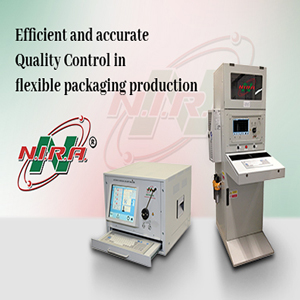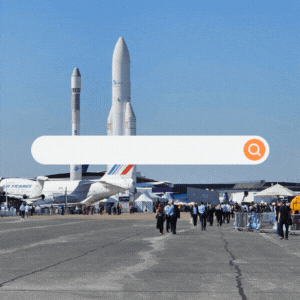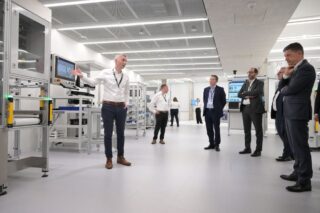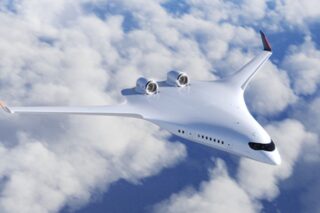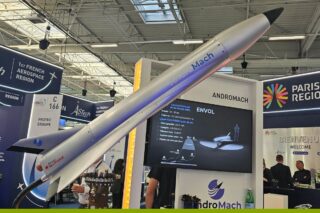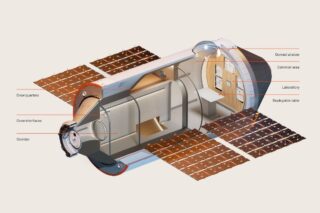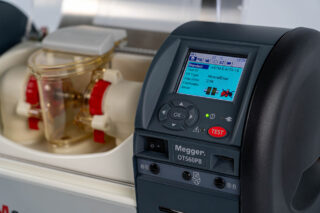At Automation Fair, Rockwell Automation’s annual event that DirectIndustry attended a few days ago, a fascinating discussion took place between Blake Moret, CEO of Rockwell Automation, and Rev Lebaredian, Vice President of Omniverse and Simulation Technology at NVIDIA. Both leaders highlighted the transformative role of artificial intelligence (AI) in industrial automation and the critical need for a skilled workforce to harness these advanced technologies effectively. They also emphasized a future where AI programming becomes accessible to everyone, making computer programming a universal skill.
The discussion underscored how AI can address complex problems, like image classification, and act as a powerful tool for simplification. This is central to the partnership between NVIDIA and Rockwell Automation. Recently, NVIDIA’s computing technologies and Omniverse have been integrated into Rockwell’s applications to simplify system design, commissioning, and operations.
The two leaders took the stage together to explore the new industrial possibilities AI offers. They also discussed the growing importance of domain expertise over traditional programming skills and stressed the need for a workforce capable of leveraging AI and automation effectively. In their view, AI is becoming accessible to everyone, and soon, “we will all be programmers.” Therefore, it’s essential to prepare future generations to leverage domain expertise for real-world value.
Here are four key points from this discussion:
1. The Role of AI in Industrial Automation: Simplification
Everyone agrees with that: AI enables us to accomplish tasks that were previously unimaginable. As Rev Lebaredian of NVIDIA explains:
“We now have unlocked the possibility of creating algorithms we just didn’t imagine we’d be able to do beforehand. And where we think that this is going to be the most applicable, where it’s going to be the most valuable, is in applying this computing to things related to the physical world around us, to the world of patterns, not just the world of ones and zeros and knowledge work.”
For industrial applications, one of the biggest benefits of AI is simplification, according to Blake Moret:
“A lot of the things that we’re applying AI to are to simplify the whole business of designing systems, to be able to commission those systems through simulation, to be able to operate and maintain them in a predictive way.”
AI also serves as a solution for complex machine vision tasks, like real-time image processing, which were once difficult to hard-code. This enhances operational efficiency and simplifies automation. As a result, operators can now use natural language to program logic controllers:
“People say, ‘Is this the future? No, it’s here today, and it’s going to allow people to not have to worry about the arcane syntax of logic, if they prefer to program using natural language and pull from models to be able to take library code and to put it together.’”
The collaboration with NVIDIA is key to integrating AI with physical systems, as Rockwell connects the world of computers, algorithms, and AI to the real world through tools like Emulate3D, powered by NVIDIA’s Omniverse.
READ ALSO
2. Collaboration Between NVIDIA and Rockwell Automation: Simulation for Solving Real-World Problems
AI’s strength lies not only in solving problems but also in enabling complex simulations. The pandemic accelerated the adoption of simulation and remote commissioning technologies. The ability to create digital twins and simulate entire systems remotely proved crucial during the COVID-19 lockdowns.
NVIDIA builds computing systems and core technologies, while Rockwell designs applications and solutions. The integration of NVIDIA’s Omniverse with Rockwell’s tools makes this collaboration particularly powerful.
NVIDIA Omniverse™ is a platform of APIs, SDKs, and services that allows developers to integrate Universal Scene Description (OpenUSD) and NVIDIA RTX™ rendering technologies into existing software and simulation workflows for building AI systems. As Rev Lebaredian explains:
“We rely on our partners such as Rockwell to take our computing technologies and actually turn them into something useful that solves real problems for others. We deeply believe in the power of simulation of physical things as a company.”
Rev also shared how NVIDIA has used simulation for years to design chips before physical production. The increasing complexity of technology has made simulation indispensable:
“We have billions and billions of transistors in [our chips]. It’s so complex, it’s impossible to have thousands of designers get it right the first time without first testing it inside a simulation environment. We believe the same is necessary for all things we build in the real world, and the things that we’re building in the real world are becoming more complex, especially as they become imbued with more computing, with more intelligence. The factories we’re building, warehouses, and products themselves are becoming more and more complex. The only way we’re going to be able to do this right, we would efficiently have good time to market, not waste materials and energy, is by ensuring that the way we do it is done well from the start, and that’s through simulation.”
With tools like Omniverse, NVIDIA enables large-scale simulations, integrating their computing expertise with Rockwell’s applications. For example, clients using Emulate3D can remotely commission and develop digital twins of equipment, which can then be aggregated into the Omniverse for further simulation. Companies like First Solar are already using simulation and Emulate3D to optimize operations and reduce material waste.
As Rev emphasizes:
“It’s essential for us to get to the next wave of the next industrial revolution, which is all about automation and applying intelligence to complex systems.”
3. The Three Computers Problem
To create more autonomous systems, or “robots” that can perceive their surroundings, make decisions, and plan their actions, Rev explains that three types of computing technologies are required:
- The robot’s computer: This controls the robot’s physical actions, such as in autonomous mobile robots (AMRs) or self-driving cars.
- The AI factory computer: This is the system used to develop the software (the “brain”) for the robot, leveraging machine learning and AI.
- The simulation computer: Before uploading the AI brain to the robot, it must be tested in a simulated environment to ensure it functions correctly. The simulation helps recreate the real world as closely as possible to provide the AI system with necessary experience.
Blake Moret points out:
“It’s no coincidence that one of the early implementations of NVIDIA GPUs and Rockwell systems are in our local robots. Being able to perceive the environment, being able to plan the route, being able to send that information up. And so it’s an opportunity for us to learn how to do that processing.”
This approach simplifies automation by reducing the number of computing elements while maintaining high performance. It enables robots to not only execute tasks based on logic but also to learn and improve over time.
4. Building the Right Team with Domain Expertise
For AI and robotic systems to improve over time, it’s not enough to simply have integrated computing systems; the workforce must be properly trained to use these technologies effectively. This was the final point discussed during the conversation.
Ensuring that workers are comfortable with simulation tools is key to accelerating adoption and realizing the full potential of AI-driven automation.
As Rev notes:
“What’s really unique in the history of computing is that the more advanced this technology gets, the easier it is to use. That hasn’t been true for most of the other technologies that preceded it.”
He explains how, in the past, programming required a deep understanding of computer languages and the inner workings of computers. Now, in the current era:
“We can speak to a computer with natural language, tell it what to do, and it translates our intentions into an actual program. It’s not perfect yet, but it’s actually pretty good already, and it’s getting better and better. And it’s not going to be long until essentially every person on earth is going to be a computer programmer, because they can program just by instructing the computer the way they talk to any other human.”
The two leaders took the opportunity to offer some advice to business leaders on the importance of building the right team with domain expertise to succeed in the new era of AI and automation. Rather than focusing on traditional computer science, they suggest that the next generations focus on gaining expertise in fields that are vital for solving real-world problems. As Rev suggests:
“What’s more valuable is having that domain experience, having them go study material science or physics, fluid dynamics, pharmaceuticals, medicine—things that are important in the real world around us. And go deep in that, because we’re essentially going to have an unlimited number of computer scientists and computer programmers to help you there.”
Domain knowledge now holds greater value than programming skills, as technology will soon handle programming for everyone.



